Port-en-Bessin
Longues-sur-Mer
German Battery WN 48
Drive to the end of the road, from there, you can view a wonderful panorama on Mulberry B. Now drive back to the 4 casemates installed by the Germans from December 1943 and just finished in June (althrough, the range finder was still in his wooden box). The Battery is in an ideal position, 215 feet above sea level and was well able to threaten the Invasion fleet. It consists of 4 Krupp 152mm, TbtsK C/36 (L/45) cannons from a de-commissioned destroyer, in type M272 Casemates with a range of 12.5 miles and a large, range-finding and observation post type M262 (No. 83). From May 28th and 29th, June 3rd, 4th and 5th, the site was bombed 5 times including the two heaviest raids in the week before D-Day totalising 1500 tons of bombs dropped on it. During the last night, 99 heavy bombers dropped their bombs inaccurately and killed 7 civilians.
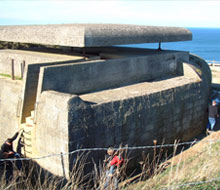
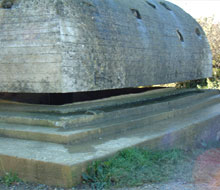
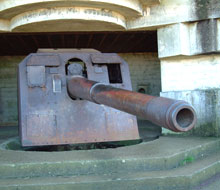
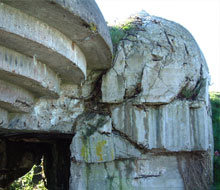
The shelling schedule

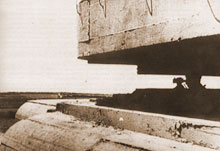
At 05.30 am Captain Weld commanding HMS AJAX engaged the battery with its 6'' guns, no reply from the German. At 05.37 the German gunners fired 10 salvos against USS EMMONS and then at 05.42 against USS ARKANSAS which faced Omaha, 10 miles off shore. ARKANSAS accompanied by FNFL GEORGES LEYGUES and HMS AJAX fired 20 shells of 12.2'' and 110 of 6''. HMS AJAX shot 114 shells of 6''. Battery seems to be silenced.
At 05.57 the Germans tried to sink the HMS BULOLO «the British Flagship» headquarter of the 50th Division. The accuracy of the battery forced the ship to weigh anchor.
At 06.05 position 1 and 2 engaged ARKANSAS once more and also the G. LEYGUES and FNFL MONTCALM; the ships joined HMS AJAX to secure the position, which seems to be reduced to silence at 06.20. But in the following 2 hours, sporadic fire occurred.
«Ajax» was joined by HMS «Argonaut» in shelling the battery which was put out of action at 08.45. It had taken 179, 6'' and 5.25'' shells from the two cruisers. Two of the casemates received direct hits through their embrasures...
The French and the British both claimed the defeat of the battery as their own...
The two remaining guns opened up again in the late afternoon but were silenced by the French cruiser, FFS «Georges Leygues». The 120 survivors of the battery, out of 184 crew, surrendered the next day to the British 231st Infantry Brigade. The battery had fired a total of 115 rounds.
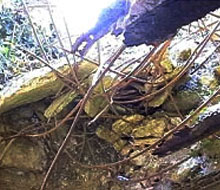
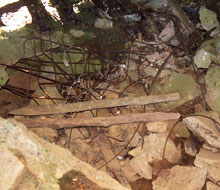
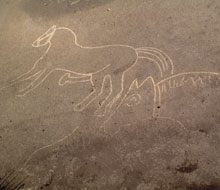
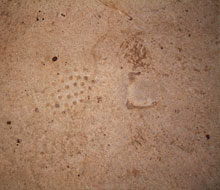
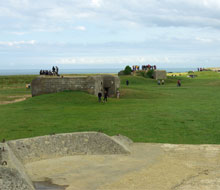
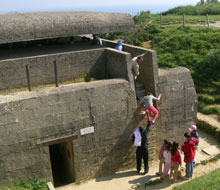
Longues-sur-Mer (WN 48) Walking Tour
1- Drive to the overlook to view the Magnitude of Mulberry B.
2- Souvenir shop and restroom, Departure for guided tours.
3- Casemate No. 4 down to pieces by a direct hit presumably from a French ship.
4- Casemate No. 3 side hit by an embrasure shot from HMS Ajax.
5- Casemate No. 2 abandoned after shrapnel impacts.
6- Casemate No. 1 intact position, look at the German boots prints.
7- Storage and shelters for the 76 m/m position, last one to resist on June 7th, a gunner killed a British soldier with his rifle.
8- A piece of German Art engraved in the concrete.
9- End of the visit to the HQ where the range finder was still in its casing.
CARTE........................................................